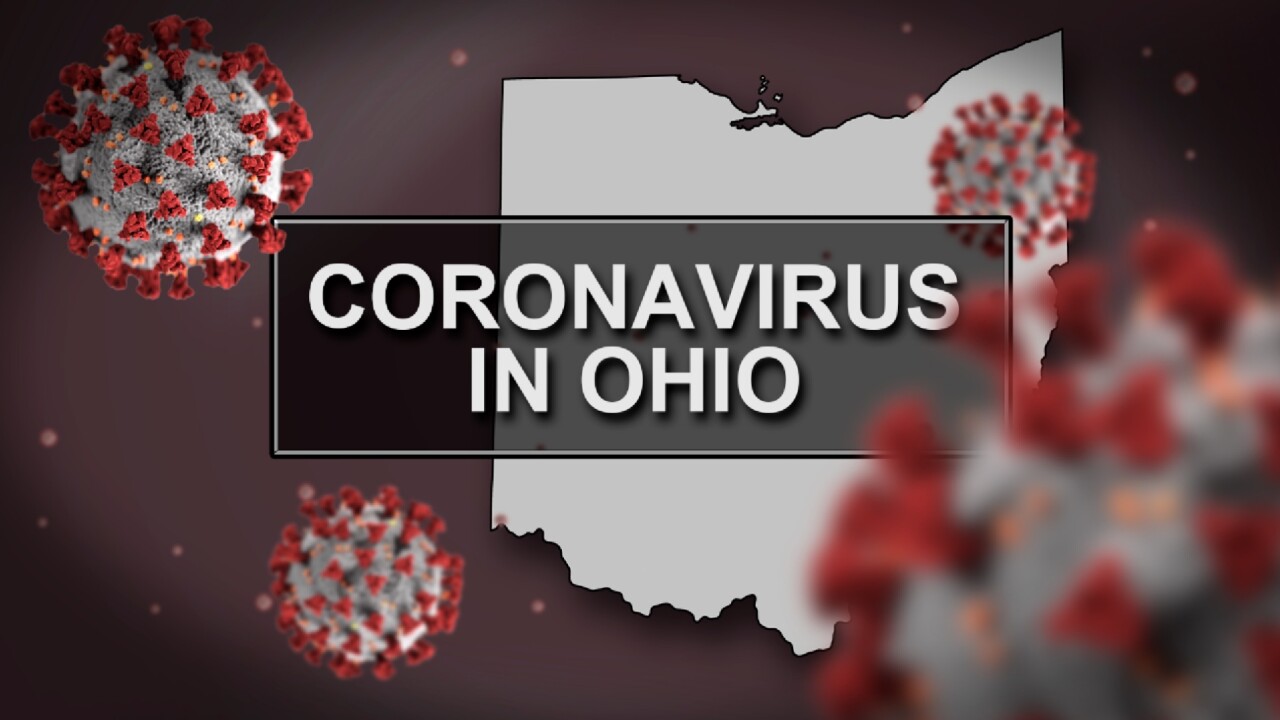COLUMBUS — The Centers for Disease Control and Prevention has issued new reporting guidance that state officials say will enable Ohio to better track COVID-19 cases.
Before Thursday, only COVID-19 cases confirmed by a specific lab test could be counted. The new guidance enables health officials to better track who has the virus, and those who have had the virus, because of new testing that is available beside the standard PCR test, which is the swab of the nose test common in Ohio.
"In the past a confirmed case was from a test. That test being a special kind of test called a PCR. Now there are some new testing technologies available. We still don’t have them widely available in any significant amount in Ohio," Dr. Amy Acton said.
The new expanded case definition from the CDC, which guides how states count cases, will include cases confirmed from a new type of rapid testing that will soon be available in Ohio, as well as select instances in which no test was administered.
The rapid tests will determine if someone has COVID-19 antibodies in their blood.
"Under the old guidelines, we would have not been told or able to count people who tested positive for the COVID-19 antibody if they had not had a laboratory case confirming the presence of COVID-19," Gov. DeWine said.
Furthermore, under these new guidelines, a person will now be counted if there is clinical and epidemiological evidence of COVID-19 and when there is no other likely diagnosis, even if there is no laboratory test. Hospital staff and medical professionals can now determine someone has COVID-19 through symptoms and exposure.
DeWine used the following example of a scenario in a nursing home where the new guidelines would be followed.
"For instance, in a nursing home, where we have very few tests available, once we’ve tested a couple of the nursing home residents and they clearly in the old PCR test have COVID-19, we can pretty much guarantee that every other case, if they’re flu negative and no other respiratory disease, are basically a spread of that disease. So those very detailed clinical cases that have a tie to a very clear person who tested positive as their exposure is also counted."
On April 5, the Council of State and Territorial Epidemiologists (CSTE), a national organization made up of member states and territories, representing public health epidemiologists and the scientists who study infectious diseases, put forth new case surveillance recommendations.
Dr. Amy Acton said the CDC case definition has evolved since the beginning of the pandemic.
The state is still sharing the number of confirmed cases, as well.
The Ohio Department of Health confirmed Thursday that there are now 5,878 cases of COVID-19 in the state. That's a jump of 366 from yesterday. Both the cases and deaths include the new cases that fall under the probable case and deaths.
There are now 231 deaths across the state, an increase of 18 over the previous day. There was an increase in deaths of 26 from Tuesday to Wednesday this week.
There were 1,755 total hospitalizations reported on Friday, with 548 ICU admissions, according to the Ohio Department of Health.
The median age of patients is 54 with the age range for infected patients from younger than 1 years old to 101 years old. Men currently account for 56% of hospitalizations.
Click through the data visualizations below to see information on cases, deaths and more in Ohio and Cuyahoga and Summit counties:
Here's a look at the increase in cases this week:
Thursday, 5,512 cases, 213 deaths
Wednesday: 5,148 cases, 193 deaths
Tuesday: 4,782 cases, 167 deaths
Monday: 4,450 cases, 142 deaths
Additional Coronavirus information and resources:
Read our daily Coronavirus Live Blog for the latest updates and news on coronavirus.
We're Open! Northeast Ohio is place created by News 5 to open us up to new ways of thinking, new ways of gathering and new ways of supporting each other.
Click here for a page with resources including a COVID-19 overview from the CDC, details on cases in Ohio, a timeline of Governor Mike DeWine's orders since the outbreak, coronavirus' impact on Northeast Ohio, and link to more information from the Ohio Department of Health, the Cuyahoga County Board of Health, the CDC and the WHO.
See data visualizations showing the impact of coronavirus in Ohio, including county-by-county maps, charts showing the spread of the disease, and more.
View a global coronavirus tracker with data from Johns Hopkins University.
Here is everything you need to know about testing for coronavirus in Ohio.
Here's a list of things in Northeast Ohio closed due to coronavirus concerns
See complete coverage on our Coronavirus Continuing Coverage page.




